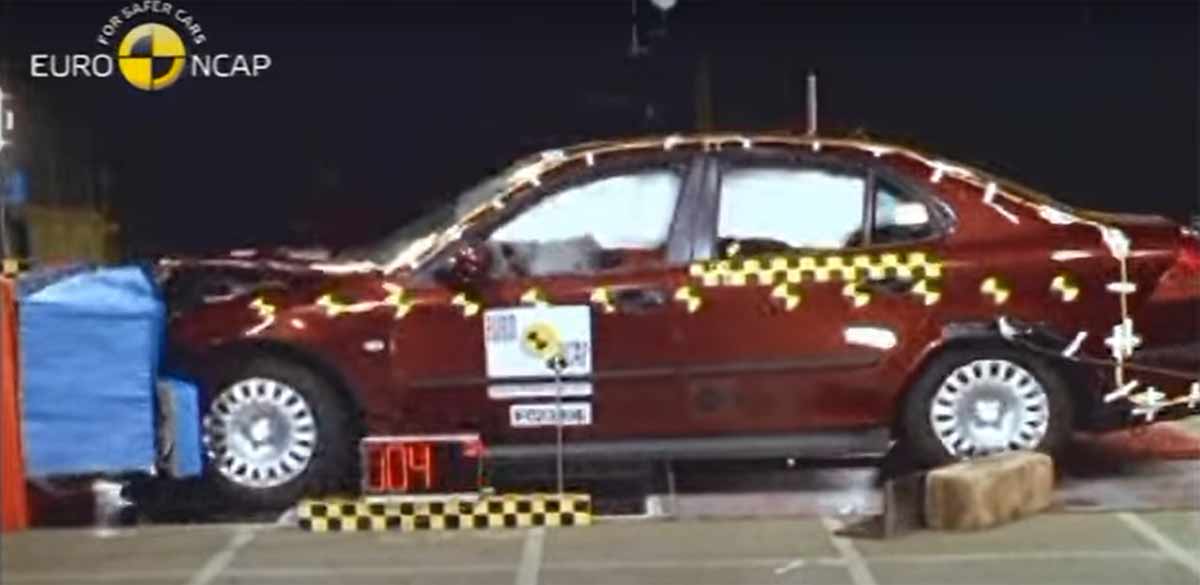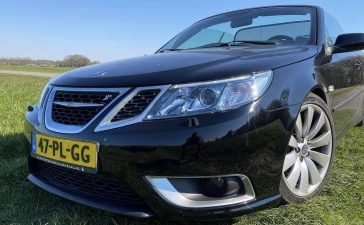In mid-2002 Saab Automobile introduced the all new Saab 9-3 Sport Sedan to the world’s motor journalists. Their verdict was overwhelming. Not only did it get high marks for crisp road-handling and intuitive responsiveness, but it created a buzz about a new level of “driving excitement” from Saab.
Right after that the car has also been tested by the independent Euro NCAP safety institute. The result? Five stars, top score. Which just goes to show that exhilaration and safety don’t have to be incompatible. In the promotional material, Saab then promoted this car with these words: “We don’t design cars for artificial crash tests. Maybe that’s why they get such good ratings.”
And so it really is, when Saab designed cars, they built them around drivers. The same approach applies to Safety. And since you never know what life will bring you, they have long adhered to a concept called Real-Life Safety.
Table of Contents
The Saab 9-3 Sport Sedan in the Euro NCAP test
The basic idea is to concentrate Saab engineers efforts on real-life situations, not theoretical scenarios. To do this, they have analysed thousands of real-life accidents. Based on this knowledge, they develop solutions to problems, many of which are not yet even part of the standardised test programmes or addressed by legislation. Take their SAHR active head restraint, for example, which grew out of a need to reduce neck injuries when your car is hit from behind.
With this approach, it’s not surprising that the Saab 9-3 Sport Sedan received high marks in the different safety tests carried out by Euro NCAP.
More safety, less frontal impact
It’s reassuring to know the Saab 9-3 Sport Sedan performed extremely well on the frontal impact test. Fitted with special crumple zones, it’s designed to absorb energy and deflect impact from the high-strength safety cage around the passengers. Front airbags inflate in one of two different modes, depending on the impact forces, as well as the driver’s weight and position. What’s more, the interior is designed to prevent injuries.
On side-impact accidents the new Saab 9-3 Sport Sedan received maximum points. Thanks to a new design of the safety cage, impact forces are led away from the critical head and chest areas down to the bottom of the car. At the same time, a roof-rail airbag along the entire passenger compartment comes out not only during side collisions but in severe frontal accidents – providing even more protection for your head. Last but not least, the safety for children was rated very high.
The Saab 9-3 Sport Sedan is where you’d want to be. Even if something unexpected happens.
Of course, the best way to survive a crash is not to be in one in the first place. And while the Saab 9-3 Sport Sedan is built for predictable road-handling, Saab engineers have also equipped it with other safety-boosting features. Like our Corner Brake Control (CBC) for superb grip, the Traction Control System (TCS) to help prevent slippage, and of course Electronic Stability Programme (ESP) for optimal handling (in the first placestandard on Aero, optional on other models, and later it was standard on all models).











